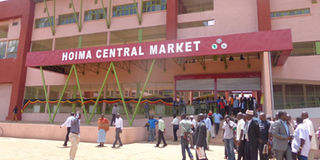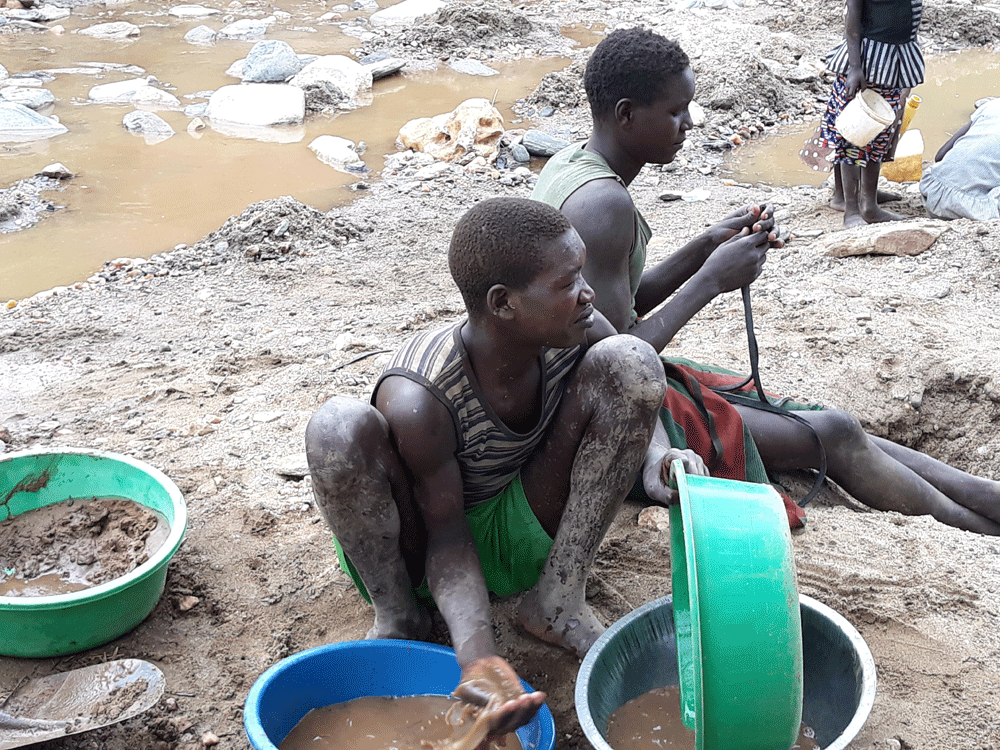Prime
How traders are coping with new markets upgrade

Hoima municipality is relocating vendors in new Hoima Central Market. Photo by Francis Mugerwa
It is a bright sunny afternoon and Asuman Kakembo is standing in front of the demolished Kiseka market tapping almost everyone that crosses his path. He does this with a smile hoping to woo potential customers but also to reach out to former customers who used to find him at his stall, at the rubble that used to be Kiseka Market.
It is hard for you not to notice him as he goes about, with what has now become routine, reaching the next customer. When I drew closer to him, he said, “…excuse me sir, would you like to check out car spare parts, we have all types and models, please come and I show you,” He explains to me before I can say anything. I tell him I am a journalist interested in his story.

Many traders have not been sensitised on how to adjust to new market settings and as such many have relocated to make-shift markets. File photo
Asked whether he used to woo customers before the demolition of the market, Kakembo quickly says no. He adds, “…If I don’t do this, a day might pass without selling a single item. I had established a customer base that now doesn’t know how to find me and that’s why I am standing here with the hope to lure someone or two.”
Like most of the affected traders, Kakembo has a shop at the basement of Auto spare center, adjacent what used to be Kiseka market.
“Most of us moved into this building (Auto spare center) because it is close, we thought our customers would easily find us,” Kakembo says.
Problem at hand
Sandwiched by several arcades, most Kiseka market traders easily found where to transfer their businesses as they await the completion of the new structure.
But many are running away from their new sanctuaries because of the high rent expenses.
“Many have left. I no longer see many familiar faces, some say they relocated to Kalerwe, Bwaise, Nakulabye and Nansana,” says Aron Kamya one of the traders at Namayiba plaza dealing in motor vehicle spare parts.
“The rent is high compared to what we were paying in our market (Kiseka). We have been paying between Shs100,000 and Shs150,000 for a stall and Shs200,000 to Shs250,000 for a standard shop,” Kamya says adding that, “Although modern markets are mandatory, there are inconveniences that have been created. Kamya says there has been solid collaboration among traders which has been tinkered with.
“We know who can handle what for instance, if I had a customer who wanted his vehicle fixed I would know where to refer him but now it is difficult because people are scattered.
Increased costs
The new operation costs are not the only concern for traders. They are wary of the money required to complete the market since they are mandated to fund the construction of the market.
“If the government could help us fund the reconstruction and allow us to pay in modest installments there would be no cause for alarm. However, we are required to pay Shs38m over a period of 10 years to be allocated a stall in the new market,” Kamya explains.
The market area that is about four acres has been cleared and enclosed with green iron sheets, a sign that reconstruction works are about to begin.
Last December, several Kiseka market traders removed rooftops and doors to their lockup shops as the eviction deadline, of December 31 drew close.
Traders’ input
Although the redevelopment of city markets is largely a trader-led project in terms of planning and designing, some traders have cited non-inclusiveness at all the stages of the process.
Richard Kamya the spokesperson of the new Wandegeya market says most of ideas fronted by traders are dropped along the way.
He says, “It is important to capture the ideas of the vendors and develop them technically in order to create an enabling environment for the traders, even those that sell tea need to be catered for in the modern markets.”
He also says the traders are not equipped with skills to enable them adapt to the improved markets.
“Vendors need to be prepared on how to improve their products and be able to work in a competitive environment. For example, most vendors who were given stalls in the new market sold them off after the eight month tax holiday given to them at the opening of the market elapsed. It was probably clear to them that they wouldn’t manage to pay taxes yet the products they dealt in hadn’t improved to meet their tax obligations,” Kamya says.
His appeal is that government should only look at setting modern structures but also ensure that people are ready to use them profitably.
Hiccups
He recommends that line ministries like that of trade should conduct trainings for some traders to enhance local and regional competitiveness.
Like in the case of Wandegeya, Kamya says when the rudimentary market was demolished to pave way for a modern one, no steps were taken to help vendors to adapt and know how to operate in a modern market.
“Traders need support from government to grow gradually through training before the government thinks of them as a source of revenue, otherwise more traders will continue to fall along the way yet the market redevelopment is meant to uplift the poor people,” Kamya argues.
He also observes that the bidding of facilities within the markets makes life difficult for low income traders.
Kamya says although the structure has good facilities like parking, a baby care centre, there were loopholes that were overlooked from the start of the project. He says traders wanted to fully manage the market but Kampala Capital City Authority (KCCA) officials said they did not have the technical abilities.
KCCA’s stand
But KCCA spokesperson, Peter Kaujju says the poor performance of new markets like Wandegeya and Usafi especially in the early stages was due to bad leadership of the market.
“There are new leaderships and we are working together to ensure the intended beneficiaries are empowered so that they can benefit other than having to mortgage their stalls or transfer ownership,” Kaujju says.
In spite of the glitches that come with the redevelopment of markets, most traders are still advocating for the upgrade of remaining markets. There are more markets that are working on plans to redevelop their respective markets including Kalerwe where preparations are underway to submit a market plan to KCCA for redevelopment.
Fred Kazibwe the chairperson Kalerwe people’s market says the traders are first settling their internal differences before submitting their proposals to KCCA for consideration.
Kalerwe, like Kiseka market is a people owned market and city authorities will only help in facilitating the redevelopment with the traders taking the lead in funding the redevelopment.
Plans
An official statement from KCCA indicates that there will be no new markets being set up in the central business district.
“As part of our continuing efforts to decongest the city, we won’t construct new markets in the central business district which explains why we have purchased land in Busega, Kitintale and Bukoto where we plan to build the markets,” Kaujju says.
He, however, says the markets already in existence like Owino and Nakasero will stay and can only be revamped. “We found those ones in existence and we can’t cease them, but no more of such will come up,” Kaujju says.
It remains to be seen how the authorities will work with the traders especially those with small scale businesses to ensure they are empowered so that the upgrade of markets benefits all stakeholders.
Background
In 2009, the government signed contracts to acquire loans amounting to $70m (about Shs175 b) from the African Development Bank (ADB) and the Arab Bank for Economic Development in Africa (BADEA) to finance the construction of markets.
Apart from improving the conditions in markets, the government wanted to boost agricultural production by improving the marketing of agricultural products. But the markets, of course, would also be used for selling other commodities.
Another programme by the government aimed at improving markets to boost Agric-business in the country was the Markets and Agricultural Trade Improvement Programme (MATIP).
The MATIP constituted mainly building markets, improving market management and agricultural trade and supporting project management and coordination.
In Kampala, NaNkulabye, Wandegeya, Ntinda, Busega, Kasubi and Kansanga markets were to be redeveloped. They were expected to be completed within five years from 2009, when the agreement was expected to come into force. But since then, we have seen only one market (Wandegeya) completed in the stipulated time frame.
Other redeveloped markets include Jinja Central Market, Mpanga Market in Fort Portal, Lira market and Mbale Market. The government had anticipated to work on 21 markets across the country between 2009 and 2014.




